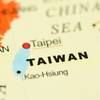Navy Announces Decision on Mayport Homebasing
Assistant Secretary of the Navy for Installations and Environment, B.J. Penn, signed a record of decision for the Mayport Homeporting Environmental Impact Statement (EIS) on Jan. 14. The Navy's decision is to implement the preferred alternative, which is to homeport a single nuclear powered aircraft carrier (CVN) at Naval Station (NAVSTA) Mayport, Fla., and to complete associated infrastructure modifications. These include dredging, infrastructure and wharf improvements, and construction of CVN nuclear propulsion plant maintenance facilities.
Homeporting a CVN at NAVSTA Mayport reduces risks to fleet resources in the event of natural disaster, manmade calamity, or attack by foreign nations or terrorists. This includes risk to aircraft carriers, industrial support facilities, and the people that operate and maintain these crucial assets.
Mayport allows us to obtain the advantages of fleet dispersal and survivability without impacting operational availability. On the West Coast we experience some reduced operational availability associated with homeport dispersal. We lose operational availability during the additional transit time required to reach operational and training areas from the Pacific Northwest. By establishing a second CVN homeport on the East Coast, we can gain the dispersal advantage without the increased transit time. The proximity to training areas and transit time to operating areas is about equal from Norfolk and Mayport.
The EIS examined potential environmental consequences of constructing and operating facilities and infrastructure associated with homeporting additional surface ships at NAVSTA Mayport. It assessed 13 alternatives, including a "no action" alternative. The EIS evaluated resources in the Mayport area that may be affected by the proposed action, such as air and water quality, biological resources (such as marine mammals and threatened and endangered species), land use, cultural resources, and socioeconomics. The EIS also accounted for cumulative impacts from other activities in the Mayport area.
The Navy worked closely with the National Oceanic and Atmospheric Administration and U.S. Fish and Wildlife Service throughout the consultation process and completed consultations prior to the final decision.













